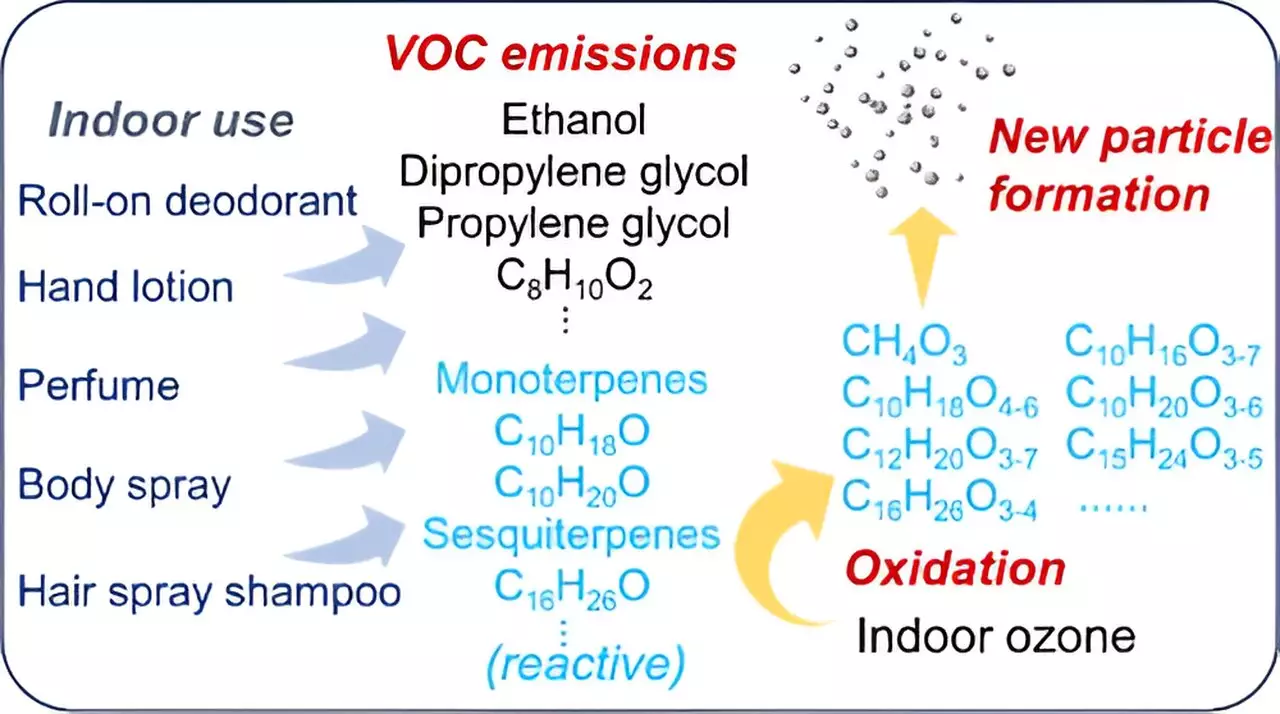In recent years, awareness of indoor air quality has surged, but new research from the École Polytechnique Fédérale de Lausanne (EPFL) casts a spotlight on a less discussed but critically important aspect: the pervasive impact of everyday personal care products. These commonplace items—ranging from deodorants and perfumes to lotions—are often viewed as harmless enhancements to our daily hygiene routines. However, the emissions of volatile organic compounds (VOCs) that result from their use can seriously degrade indoor air quality and pose potential health risks. This groundbreaking study, which appeared in *Environmental Science & Technology Letters*, reveals that the repercussions of these products go beyond mere inconvenience.
Under the direction of Dusan Licina, an assistant professor at EPFL, a team of researchers undertook a meticulous examination of the air quality ramifications of using personal care products in enclosed environments. Starting with an innocuous shopping list that included popular items from well-known brands, the researchers set out to simulate realistic conditions found in homes and offices. Utilizing specialized environmental chambers that replicate indoor spaces, they meticulously monitored the air quality before, during, and after the application of these products.
Two different scenarios were investigated: one without ozone and the other with ozone introduced into the chamber. The objective was to better understand how these chemicals interacted in the presence of ozone, prevalent in urban environments especially during warmer months. What emerged from this research was profoundly disconcerting: the introduction of ozone not only led to the emission of new VOCs but also resulted in the formation of ultrafine particles. These particles are particularly alarming because of their ability to penetrate deep into the respiratory system, which could have unknown consequences for human health.
The research identified over 200 VOCs emitted from the personal care products in the absence of ozone, with the most common compounds being ethanol and monoterpenes. Yet, when ozone was introduced, there was a notable generation of new, potentially harmful substances that raised alarm bells among the research team. Some VOCs exhibited a phenomenon termed “nucleation,” leading to the creation of larger ultrafine particles, which stands in sharp contrast to the typical expectations from less reactive substances.
Licina emphasized the uncertainty surrounding the health implications of these emissions: “We still don’t fully understand the health effects of these pollutants, but they may be more harmful than we think.” It’s this lack of understanding that makes this study crucial; it flags a potentially major public health concern that requires further examination and investigation.
Given the findings, it becomes imperative to consider strategies that could mitigate the negative impact of these personal care products on indoor air quality. Researchers in the study have suggested several avenues for improvement. Firstly, improving ventilation during the application of these products could help reduce the concentration of VOCs in the air. The installation of air-cleaning devices, such as activated carbon filters, could also lower the levels of harmful particles and compounds released.
Moreover, a controversial yet vital step may be to reassess our reliance on conventional personal care products altogether. This raises the question of whether embracing natural alternatives with lower chemical reactivity might be a feasible solution. While transitioning to these options may be challenging for many accustomed to chemical-laden products, the potential long-term health benefits could justify such a shift.
The research conducted by the team at EPFL shines a necessary light on an overlooked area in the ongoing conversation about indoor air quality. As we continue to prioritize the health and well-being of our indoor environments, it is essential to become more educated about the hidden dangers of the products we use daily. By embracing alternative solutions and advocating for higher standards of indoor air quality through better designs and practices, we can foster healthier living spaces for ourselves and future generations. As this study indicates, the issue of VOC emissions is both complex and critical, deserving of our immediate attention and further study.


Leave a Reply